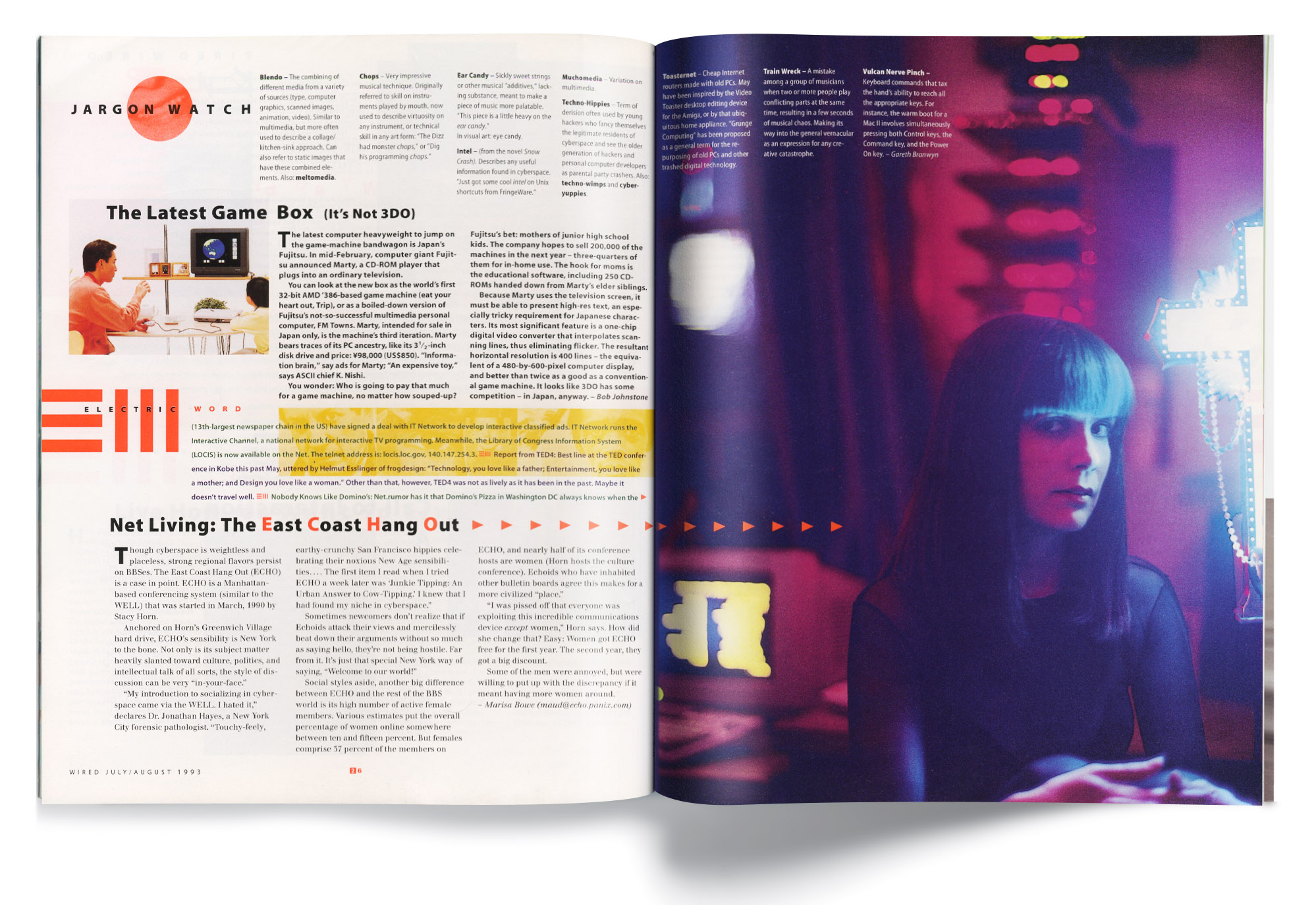And now Rose, whose handle was KZ, was presented the same question, six and a half years into a battle with lung cancer that she’d documented on a section of ECHO devoted to health. When she notified the community that she was turning to hospice care, her fellow “Echoids” responded with the balloons, along with flowers and chocolate.
Then last spring, ECHO’s founder, Stacy Horn, announced KZ’s death on ECHO. KZ was one of the platform’s 20 inaugural members, having joined in its first year at Horn’s invitation and remained until her death at 72. She was the host of the network’s sex conference, a real estate agent, artist, self-proclaimed “dance snob,” taiko drummer, tennis player, and general “doer.” People of such eclectic interests were central to establishing the vibrant cultural personality of this online community.
ECHO stands for “East Coast Hang Out,” and when Horn founded it, she wanted to create a digital space that was social and unequivocally New York. Members had to meet two requirements: they had to be geeky enough to navigate a cumbersome, text-based digital platform in the early days of the internet, but culturally in tune enough to foster the types of conversations you might hear at a West Village dinner party. Horn enlisted her graduate school friends (she was a recent graduate of New York University’s interactive telecommunications program), as well as members of other bulletin-board-style platforms. One primary source of inspiration was the California-based online community known as the WELL (for “Whole Earth ’Lectronic Link”), started by Stewart Brand in 1985. Brand is well known for being a counterculture impresario in the Bay Area during the 1960s, editing the widely distributed Whole Earth Catalog. Just as the WELL brought together experimental, self-sufficient individuals who foresaw the endless possibilities of computers, ECHO defined the New York web scene and influenced the design of contemporary social networks, creating lifelong friendships in the process.
When ECHO was founded, the World Wide Web was still being invented, and browsers weren’t a thing. Users congregated in interest-based forums, but Horn found most of them to be male-centric, heavy in technical jargon, and, just like the WELL, centered on the West Coast. She craved a destination like the vibrant and artistic 20th-century salons of Gertrude Stein’s era, where users could exchange ideas and meet one another while getting lost in discussion.

FREDERICK DUPOWERS; MAGAZINE FROM THE COLLECTION OF MIT LIBRARIES
What she ended up making was a hotbed of culturally minded early internet enthusiasts—a social network before there was a term for that. Through the evolution of this ecosystem, users would meet one another and contribute to the changing digital economy by starting businesses and cultural programming. They would forever transform their lives in a way that wouldn’t otherwise have been possible, all while making a lasting mark on New York’s budding tech community. ECHO was a blueprint for the larger-scale social networks that we see today, and it serves as a reminder that behind all networks are people, with a lot of words to exchange.
Horn, who is now 66, still lives in the same West Village apartment that was her home when she launched ECHO. When I met with her to discuss its origins, she had a neatly trimmed bob with bangs and wore denim jeans with a fitted black T-shirt—conjuring both Steve Jobs and downtown “it girl.” She said the idea for ECHO came out of her day job as a telecommunications analyst at Mobil, where she was the only woman in her department.
Week after week, she’d pitch the idea of “computer conferencing,” an efficient strategy to manage machines in different time zones that would post updates to one continuously synced document. “I would stake my entire future that this is going to be the thing,” Horn enthusiastically told the team of corporate men about her plan. She got the impression they thought the idea was laughable, and the answer was a firm no. Her boss suggested that obtaining a graduate degree would help Horn climb the corporate ladder, and while her interests were shifting toward writing, she thought graduate school sounded exciting. She picked the NYU program because it had “telecommunications” in the title, so Mobil would cover it as a work-related expense.
Horn described cyberspace as the most erotic medium because of the anticipation and thrill that messaging provided.
Horn expected the program to be as dry and technical as her job designing telecommunications networks, but she was taken by the school’s experimental philosophy. She wrote a play called Corpse in Space that took the form of a conversation between a talking sofa, a praying mantis, and a dead saint. As she went to turn it in, a pang of doubt overcame her; she sheepishly placed her draft at the bottom of the stack of assignments and quickly left the room. The next time she was at school, Red Burns, ITP’s renowned chair, brusquely called out, “Stacy Horn! Stacy Horn!” Horn interpreted the tone as ominous, but to her surprise, Burns embraced her and said her paper was more fun than anything she’d read in years. In that moment, Horn’s worldview changed. “Oh my god, I can just go crazy and somebody might actually like it,” she recalls thinking. Technology didn’t have to be cold and impersonal. She became dedicated to experimentation and play in her work.
